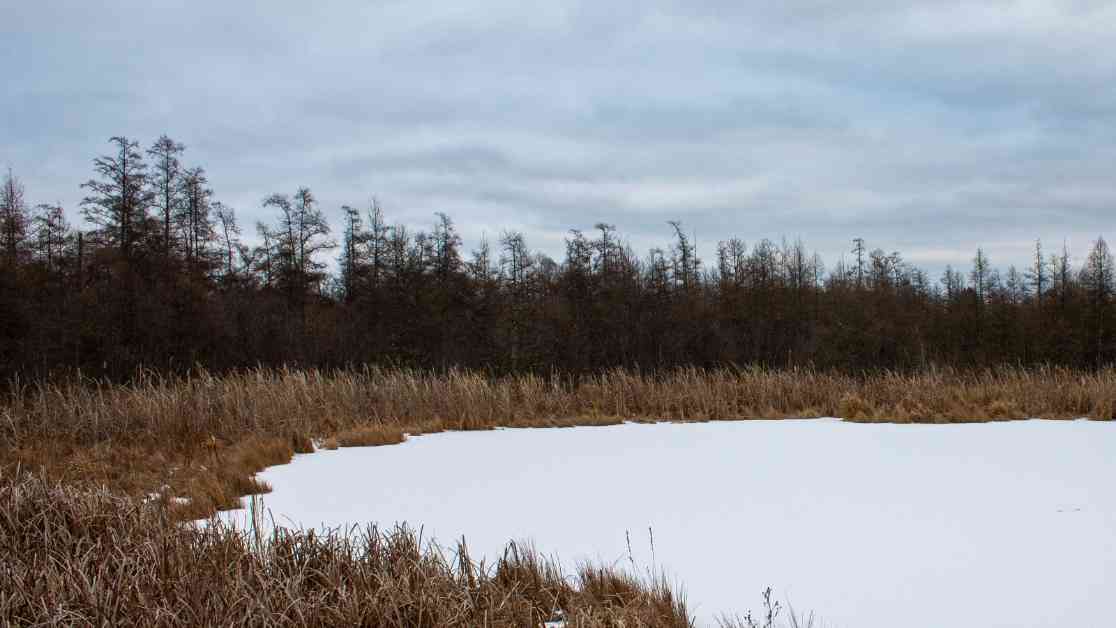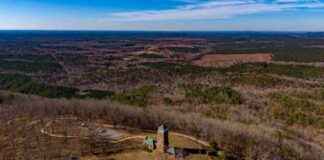Restoring Bogs for Carbon Sequestration: A Vital Climate Solution
Peat bogs, while covering only 3% of the Earth’s surface, play a significant role in sequestering carbon dioxide, making them crucial in combating climate change. However, these unique wetlands are under threat due to various factors impacting their delicate ecosystems.
On a frosty winter day, Mary Colwell, a naturalist and educator, led a group of eager visitors on a brisk exploration of the Volo Bog Natural Area in northern Illinois. As they strolled along a boardwalk winding through the wetland, Colwell drew their attention to sphagnum moss, a key player in the bog’s carbon storage capabilities. Encouraging the group to touch the delicate, pale green moss, she highlighted its remarkable ability to retain water and compared its texture to cotton candy in warmer weather.
The magic of sphagnum moss lies in its slow growth rate, taking thousands of years to form a peat bog. Volo Bog, which began its transformation from a glacial lake over 6,000 years ago, continues to evolve, encroaching upon the central lake known as the “eye” of Volo Bog. Despite their essential roles in supporting biodiversity, purifying water, and capturing carbon, bog ecosystems have faced a steady decline. In Illinois alone, over 90% of wetlands have disappeared, reflecting a global trend of wetland loss due to draining and development.
Unlocking the Mysteries of Sphagnum Moss
Scientists, like Sona Pandey from the Danforth Plant Science Center, recognize the importance of sphagnum moss in carbon sequestration. Pandey’s team is conducting groundbreaking research by cultivating moss in a lab, studying its DNA, and investigating how climate change threatens these vital ecosystems. Sphagnum moss acts as a carbon sink by thriving in waterlogged, acidic conditions and resisting decomposition, essentially acting as a massive reservoir of living carbon.
However, draining bogs for development or agriculture exposes sphagnum moss to air, triggering decomposition by microbes and releasing stored carbon into the atmosphere. To combat this threat, understanding the intricate workings of moss on a microscopic level is crucial for implementing effective conservation and restoration strategies. By identifying resilient species for reintroduction into degraded bogs, researchers like Pandey aim to safeguard these invaluable ecosystems for future generations.
Preserving Our Natural Heritage
While the importance of wetlands in carbon sequestration is gaining recognition, legal challenges pose a significant threat to their protection. A 2023 Supreme Court ruling, exemplified by the Sackett v. EPA decision, stripped existing safeguards for wetlands not directly connected to larger bodies of water, leaving many bogs vulnerable to degradation and destruction.
Rebecca Hammer, an attorney at the Natural Resources Defense Council, emphasizes the irreplaceable nature of peat bogs, which can take thousands of years to form. The loss of these ecosystems due to development or pollution results in irreversible damage, highlighting the urgent need for enhanced conservation efforts and legal protections. Colwell, echoing the sentiments of conservationists and scientists, advocates for proactive measures to safeguard and restore these natural wonders to enhance carbon sequestration and mitigate climate change.
In conclusion, the preservation of peat bogs and other wetland ecosystems is not merely an environmental concern but a critical step in addressing the global climate crisis. By unlocking the secrets of sphagnum moss, raising awareness about the importance of wetlands, and advocating for robust legal protections, we can ensure the long-term health and vitality of these invaluable carbon sinks. As we navigate the challenges of a changing climate, the restoration of bogs stands as a beacon of hope for a sustainable future.














